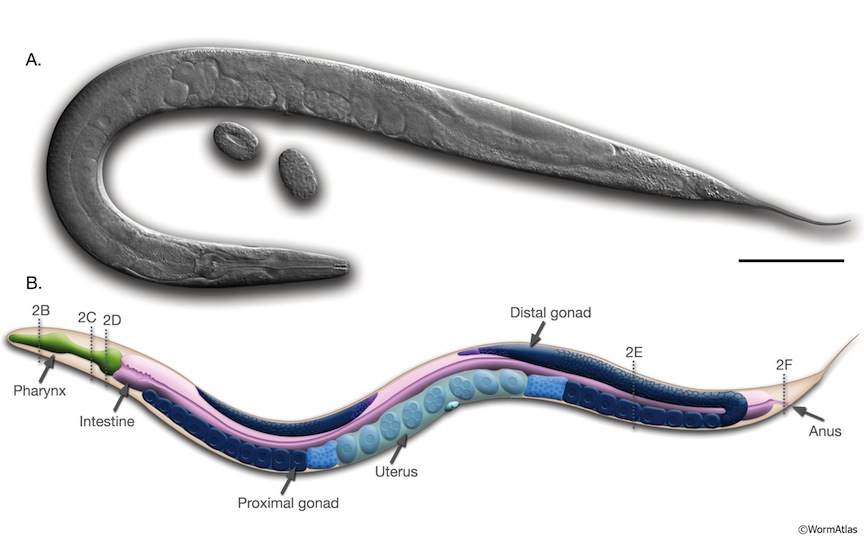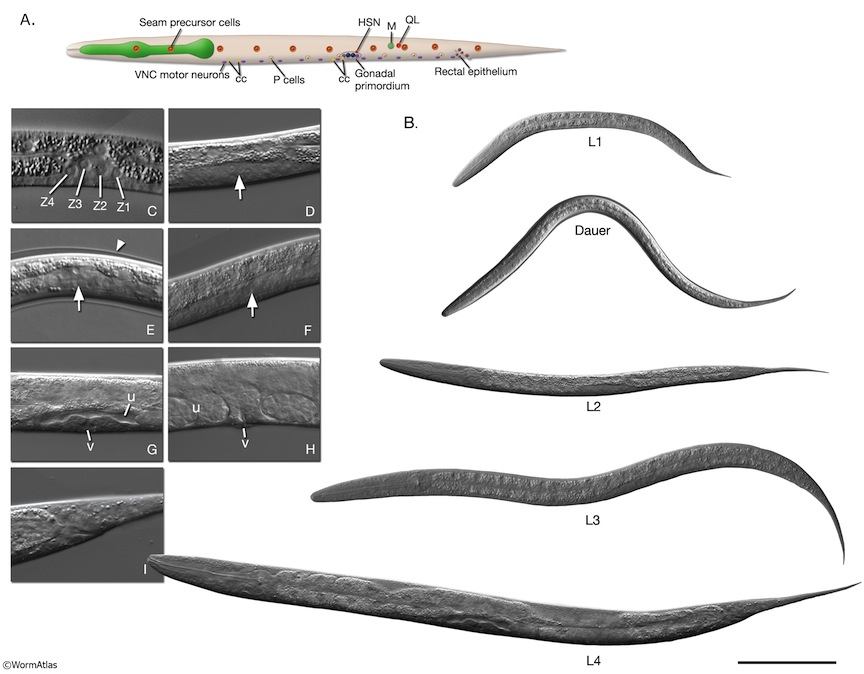Worm numbers
This page is intended to become a collection ground for useful and interesting numbers about C. elegans biology. These numbers include things such as the average volume and mass (calculated estimates) of an adult hermaphrodite, larval stage, or embryo. Some of these numbers are well established facts whereas others are estimations, with a description of the method for calculating or estimating provided.
Worm Volume
Based on these images from Worm Atlas (www.wormatlas.org):
... where the scale bar represents 100 microns, we can roughly deduce the volume of the embryo, each larval stage worm, and the adult hermaphrodite of C. elegans.
Single embryo = ~35 picoliters
Single L1 larva = ~80 picoliters
Single L2 larva = ~135 picoliters
Single L3 larva = ~300 picoliters
Single L4 larva = ~800 picoliters
Single Adult hermaphrodite = ~2.2 nanoliters
Worm Mass
Assuming the worm has a density close to that of water (1 gram per milliliter) these are estimates of mass:
Single Embryo = ~35 nanograms
Single L1 larva = ~80 nanograms
Single L2 larva = ~135 nanograms
Single L3 larva = ~300 nanograms
Single L4 larva = ~800 nanograms
Single Adult hermaphrodite = ~2.2 micrograms
DNA Numbers
Knowing that a single complete turn of DNA is approximately 3.4 nanometers in length (34 Ångstroms), 2 nanometers in width (20 Ångstroms), and is about 10 base pairs (bp)(and therefore 1 base pair is .34 nanometers long (3.4 Ångstroms)), we can deduce the volume of a single base pair of DNA to be roughly 1 cubic nanometer (1 nm^3):
Assuming a base pair is like a short cylinder with volume:
<math>\sqrt{2}</math>
<math> f(x) = x^2\,\!</math>

